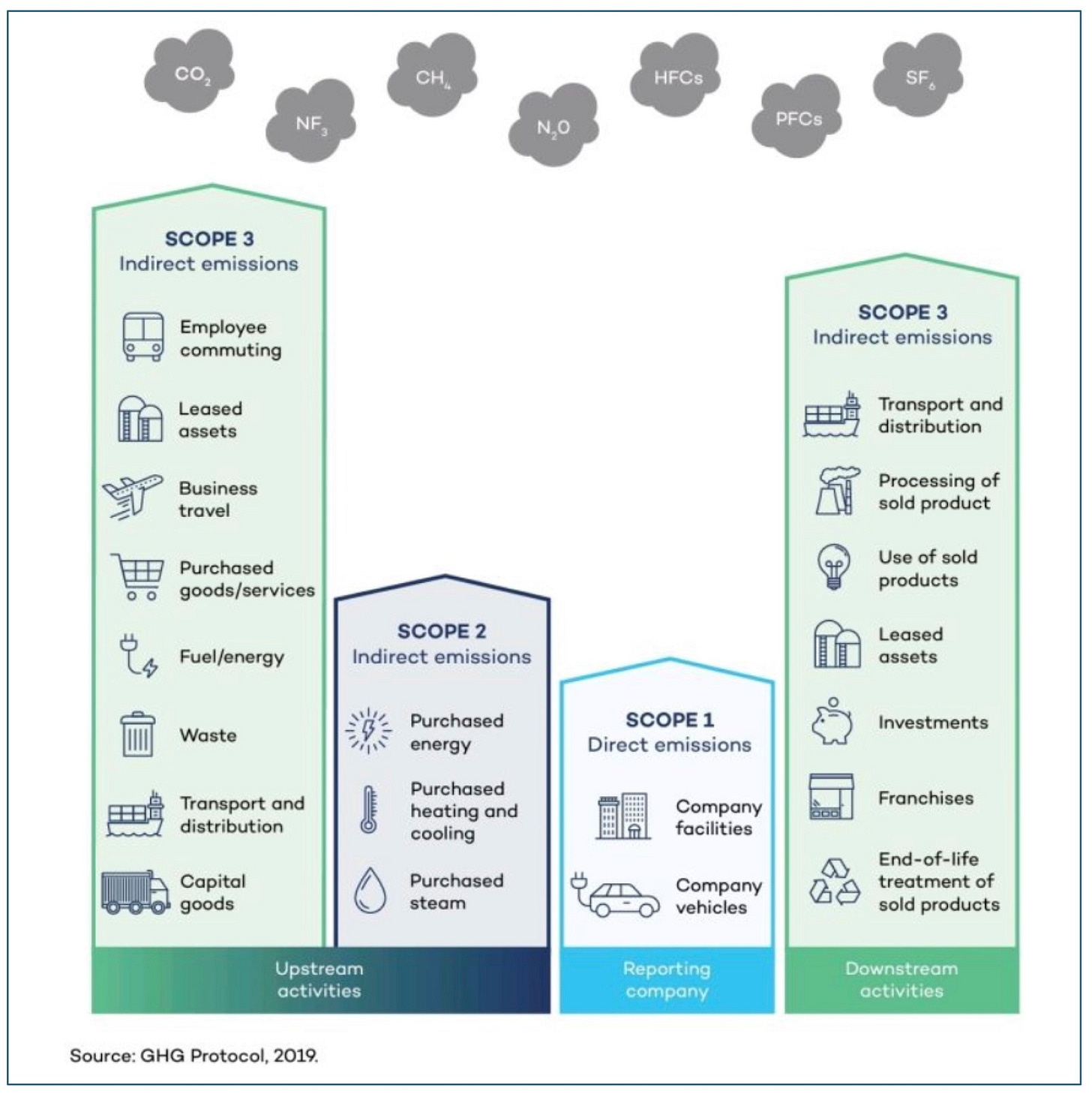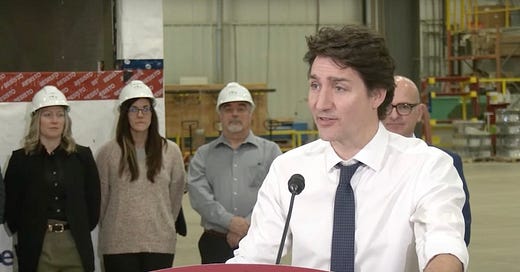Ottawa Can’t Deliver on Housing, Climate Without Everyone Onboard
The Trudeau government is staking its future on affordable housing, and the right choices will help bring down climate pollution. But not unless provinces and private investors pile in.
If you’re attending an improv comedy show and you hear one of the performers shout out, “Everyone get in here!”, get set to be wowed.
Those words are a standard call for everyone on an improv team to get onstage, right now. It happens when one of the players has an idea that will make a funny moment hilarious, but will only work if everyone piles in and gives it everything they’ve got.
The federal government’s affordable housing plan is more complicated, and the climate emergency is pretty much infinitely more serious, than any improv scene. But apart from those glaring inconsistencies, the analogy makes sense when you look at what Ottawa is trying to get done, then factor in the way provincial governments and some businesses voices are responding.
In the days since Deputy Prime Minister and Finance Minister Chrystia Freeland released her 2024 budget, much of the top-line political commentary has been predictable. The fallback assumption is that this is the Trudeau government’s last chance to turn around its disastrous polling numbers, the last budget they’ll likely be able to implement before a 2025 federal election.
And community voices have been quick to point out the gaps, beginning with a missed opportunity to impose a windfall tax on oil and gas profits and pour the proceeds into climate solutions.
But the fact that every word uttered by any politician in Ottawa over the next 18 months will have an electoral undertone doesn’t tell us whether the budget contains any of the measures we would expect to see if the government were “treating it like a damn emergency”—whether the “it” is the climate crisis, the cost of living crisis, the affordable housing shortage, or all of them rolled into one.
This year’s budget pours $8.5 billion into Prime Minister Justin Trudeau’s plan to build 3.87 million new homes by 2031, and touts the more than $160 billion the government has earmarked for its net-zero economic plan, much of it pre-announced for future years rather than front-loaded to help meet the country’s 2030 emission reduction goals.
But here’s the catch: Ottawa won’t be able to deliver on any of its goals, and Canadians won’t see the benefits the budget is promising, unless “everyone gets in here”. Unless provincial and territorial governments, businesses of all kinds, and the financial sector all jump onboard.
The $14-Billion Gap
Our good friends at Corporate Knights had the most direct and thoughtful take on what the budget can and can’t get done with their latest analysis of the “say-do gap”. That’s the difference between what it will cost to meet the country’s climate targets and the dollars Ottawa is offering up to get the work done.
Almost exactly two years ago, on Earth Day 2022, Corporate Knights identified a massive “say-do gap” between G20 countries’ 2030 emission reduction pledges and the climate action they were actually taking, with Canada placing dead last among the 10 wealthiest nations in the group. High-income countries within the G20 were 60% of the way to their 2030 pledges, with Germany leading the way at 136% followed by Japan at 87% and the United Kingdom at 75%. Canada—in a comparison that predated the tens of billions in cleantech spending foreshadowed in Freeland’s 2023 budget—placed last at just 6%.
Fast forward two years, and much of the G20 is locked in a cleantech arms race triggered largely by the Biden administration’s Inflation Reduction Act, with Canada touting $14 billion in cleantech investment over the last year and $93 billion in incentives in store through 2035. But Corporate Knights’ continuing analysis now points to another say-do gap—a $14-billion difference between Ottawa’s financial commitments and the dollars actually going out the door. And that’s on top of a far larger discrepancy Ottawa itself has acknowledged in the dollars available to decarbonize the economy and address climate impacts.
“When it released the 2022 budget, the federal government estimated the overall climate funding gap in Canada to be up to $125 billion per year. Over the next 10 years, planned federal climate investment averages $15 billion per year, mostly in the form of investment tax credits,” wrote Corporate Knights CEO Toby Heaps and Research Analyst Jessica Carradine.
“This leaves a gaping hole of up to $110 billion a year, which the federal government along with other levels of government and the private sector will need to fill if Canada is going to meet its climate commitments and seize upon clean economy growth opportunities.”
It adds up to an important acknowledgement that Ottawa can’t go it alone on the climate and energy transition—not least because any single government would be slaughtered by fiscal hawks if it tried to raise enough money to get it all done unassisted. So it makes perfectly good sense that this year’s budget points right back to provincial premiers, too many of whom have spent the past many months taking reflexively politicized shots at anything the federal government tries to get done, particularly on climate and energy.
All Together Now
The budget calls for all orders of government “to build homes at a scale and pace not seen since the Second World War.” It announces “a range of new measures to make the math work for homebuilders, unlock the lands needed to build new homes, cut red tape that holds back new construction, attract and train skilled workers, and accelerate the implementation of innovative ways to build more homes, faster.”
It offers provinces and territories $5 billion to support the infrastructure needed to get new housing built, but only if they sign on to a plan that calls for more “missing middle” housing and adopt upcoming building code revisions “to support more accessible, affordable, and climate-friendly housing options,” among other criteria. Provinces have until January 1, territories until next April 1, to sign off. After that, Ottawa says it will deal directly with local governments.
It's a reasonable enough way to proceed when you really mean to declare an emergency. It would be fun depressing instructive to speculate on how much farther, how much faster Canada could have moved on emission reductions and climate resilience if they had received the equivalent level of care in the first Liberal budget tabled in 2016 by then-finance minister Bill Morneau—who’s now scorching his former government colleagues for alienating his wealthy peers by having the temerity to raise their taxes.
But in the immediate aftermath of Tuesday’s budget speech, there was scant evidence that the provinces wanted in.
The Alberta government tabled legislation to prevent municipalities from signing funding deals with Ottawa without provincial approval.
And the Council of the Federation, which speaks for the 13 provincial and territorial premiers, released a letter that accused the federal government of poor consultation and essentially took it to task for setting a direction and trying to run with it.
“Every government should have the right to receive ongoing financial compensation representing their fair share,” the premiers stated. “This includes provinces and territories that reserve the right to require unconditional federal funding.”
Dollars Always Have Strings Attached
In other words, if Alberta’s Danielle Smith wanted to slap another senseless moratorium on renewable energy development, or Ontario’s Doug Ford insisted on pursuing his weird aversion to fourplexes, federal taxpayers should just smile, fork over the cash, and no doubt blame Ottawa when its climate or housing policies failed?
The federal government would “always rather work with the provinces,” Trudeau responded in a media briefing Friday. “But if we have to, I will go around them and be there for Canadians, because this economy deserves young Canadians getting the support they need.”
That thing about “being there for Canadians” will always be in the eyes of the beholder. But the important truth in Trudeau’s response is that federal governments routinely roll out funding programs with strings attached—it’s one of the ways to get anything done in a country that divides constitutional authority between national and provincial governments.
Provincial premiers know that full well. So you have to wonder whether their real agenda is to slow the government down and deprive it of a big win with an election right around the corner. If that’s right, you really have to ask: how preposterous do the premiers want this to get, and how gullible do they really think we are?
What Would Success Look Like?
So if the feds are trying to deliver, federal-provincial politics are getting in the way, and there’s real urgency attached to the climate emergency and the affordable housing crisis, where is the real room to manoeuvre? Here’s what success might look like:
• Every aspect of the federal housing plan should mandate deep energy efficiency, drastically driving down monthly energy bills with high levels of insulation, electric heat pumps in place of gas, and pre-wiring for the electric vehicle chargers that occupants will eventually need. There’s been some talk over the last week that Ottawa might relent on high climate or affordability standards to get more homes built faster. That would be a monumental enough error to defeat the whole purpose of the exercise.
• The government has to get out of the habit of cancelling programs so successful that they run out of funding faster than expected. The latest example is the $2.6-billion Greener Homes Grant Program, a seven-year effort that burned through its budget in about 30 months. This year’s budget quite rightly corrects the obstacles that Greener Homes put up for households in greatest need of a break on their energy bills—but the original, bigger program is gone, and gone far too soon. The same thing happened with the $470-million On-Farm Climate Action Fund, which quickly exhausted the available funds and is now closed to new applicants.
• If anyone out there is serious about closing the say-do gap and mobilizing dollars for clean, emission-reducing technologies, how about speeding up the delivery of clean investment tax credits that have been little more than an upbeat talking point since they were announced a year ago? Words on paper won’t bring down the country’s climate pollution, and weighting the credits toward the early 2030s won’t deliver the results we need this decade, when the Intergovernmental Panel on Climate Change is calling for a 45% reduction in global emissions.
• Still on the topic of tax credits, it’s perverse to be pouring public money into the fossil fuel industry’s carbon capture and storage (CCS) ventures when companies still aren’t investing their own record profits in the effort—and when carbon capture’s biggest boosters admit the technology won’t be ready for prime time by 2035.
It isn’t impossible for a budget oriented mainly toward affordable housing to deliver a simultaneous win on emission reductions and clean technology. But it isn’t a foregone conclusion. To connect those dots and keep them connected, it’ll be essential for the federal government to sweat the details, and for provincial governments to get with the program.
Mitchell Beer traces his background in renewable energy and energy efficiency back to 1977, in climate change to 1997. Now he and the rest of the Energy Mix team scan 1,200 news headlines a week to pull together The Energy Mix, The Energy Mix Weekender, and our weekly feature digests, Cities & Communities and Heat & Power.
Chart of the Week

Ottawa Pledges Billions for New Housing, Claws Back Funds for Energy Retrofits
Scientists Test ‘Insane’ Plan to Slow Ice Melt in Canadian Arctic
UPDATE: Federal Budget to Include Revamped Greener Homes Grant
House of Commons Adopts Sustainable Jobs Act
Canada’s Hydropower Wanes Amid Historic Hot, Dry Conditions
Florida Moves to Ban Offshore Wind, Scrap the Words ‘Climate Change’ from Existing Laws
‘Turning Point’ Climate Ruling in European Court Could Reshape Canadian Climate Law
Regional Data Reveal Differences in Climate Support
More ‘Gentle’ Density, Fewer Energy Retrofits as Federal Budget Homes In on Housing
Ottawa’s new EV tax credit raises hope of big new Honda investment (Globe and Mail)
Alberta Government Releases Further Details on Carbon Capture Incentive Program (McCarthy Tétrault)
Indigenous communities are leading Canada’s clean energy transition (Globe and Mail)
Ontario to refurbish electricity generating plants in Niagara Region for $1 billion (The Canadian Press)
Canada should avoid the mistakes the UK made in biomass for energy (Policy Options)
Columbia Law report rebuts 33 ‘most pervasive false claims’ about solar, wind, EVs (Utility Dive)
Once praised, settlement to help sickened BP oil spill workers leaves most with nearly nothing (The Associated Press)
BP’s EV charging arm cuts jobs, reduces global ambitions (Reuters)
Low cost airlines pollute more than ever, latest emissions data shows (Transport & Environment)
Scotland’s scrapping of climate change target is a failure as pathetic as their excuses (The Scotsman)
Fossil fuel debts are illegitimate and must be cancelled (Climate Home News)







